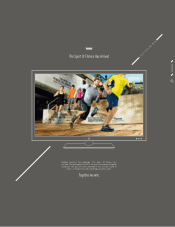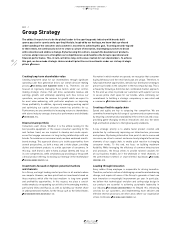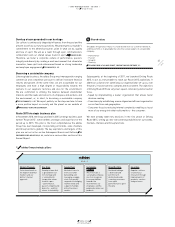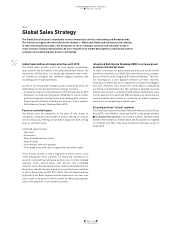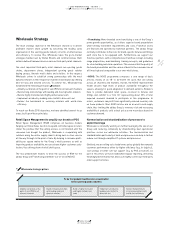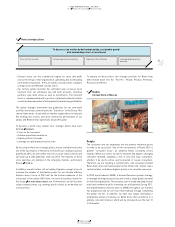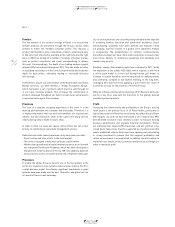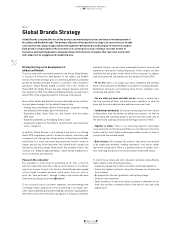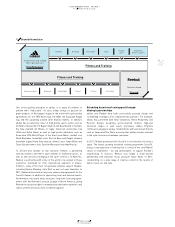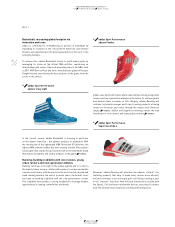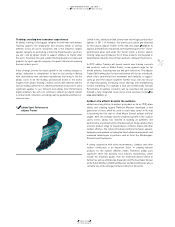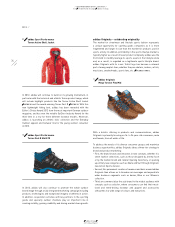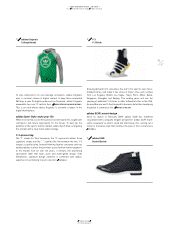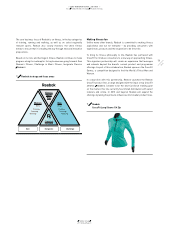Reebok 2011 Annual Report Download - page 73
Download and view the complete annual report
Please find page 73 of the 2011 Reebok annual report below. You can navigate through the pages in the report by either clicking on the pages listed below, or by using the keyword search tool below to find specific information within the annual report.
adidas Group
2011 Annual Report
GROUP MANAGEMENT REPORT – OUR GROUP
69
2011
02.3 Global Brands Strategy
Brand architecture and differentiation
We believe that our Group’s multi-brand structure gives us an
important competitive advantage. Through our brand architecture, we
seamlessly cover the consumer segments we have defined, catering
to more consumer needs, while at the same time keeping clarity of
brand message and values. In each case, the positioning of adidas
and Reebok and their respective sub-brands is based on their unique
DNAs – their history and their values.
As a true global brand with German roots, adidas is targeting com-
petitive sports based on innovation and technology with adidas Sport
Performance. This sub-brand is the multi-sport specialist. Our
positioning in this respect clearly starts in producing the best products
for use in specific sports such as football, basketball and running. We
then seek to leverage brand loyalty and strength in innovation in other
categories. The other sub-brands, adidas Originals and Sport Style,
strive to take the brand’s unique heritage and design leadership to
capture further potential in sports lifestyle and fashion markets.
Reebok, in contrast, is an American-inspired global brand, starting
with fitness as the backbone for the brand’s global positioning. With
Reebok, we aspire to make our consumers “fit for life”. Innovation
at the brand is rooted in developing technologies and concepts that
enable consumers to train at their best every day, whether they are
running to keep fit, exercising in the gym or participating in other
fitness activities. Reebok Classics leverages the fitness attitude and
roots of the brand into the lifestyle segment. Reebok thus focuses
in-between the two ends of the consumer spectrum
DIAGRAM 01
.
Through these differences in positioning, our brands are therefore not
cannibalising each other in the market, but rather challenging and
supporting each other as friendly competitors with different target
groups in mind.
Each brand and sub-brand is responsible for bringing its respective
positioning to life, through the creation of products and communica-
tions that not only support the commercial functions in their day-to-
day business activities, but also provide the platform and framework
for long-term market share and profitability improvements. While
adidas and Reebok each have unique identities, heritages, technol-
ogies, designs and reputations, the strategic principles and methods
for driving future sales growth and profitability improvements are
common to both. These include:
– Leadership in product innovation to excite and inspire the consumer
– Marketing and communication leadership
– Activation and validation via a relevant set of promotion partnerships
– Extending brand reach and appeal through strategic partnerships
01 Brand architecture – portfolio strategy
Pure Performer Athletic Stylite Athletic Classic Brand Driven Sport Inspired Style Adopter Style Setter
Competitive Sports Active Sports Casual Sports Sports Fashion


